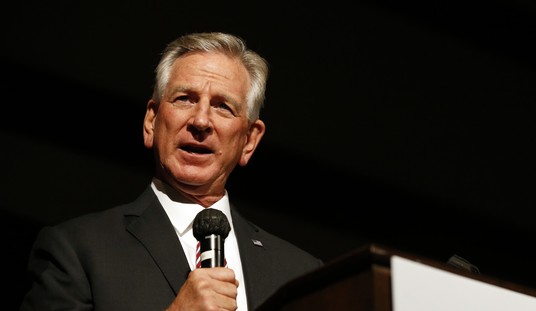Today the city of Nashville is on edge following the July 26 police shooting death of Daniel Hambrick. As is all too often the case, the racial calculus of the incident is as much a part of the story as is the question about whether the shooting was justified. The New York Post headline from August 9 exemplified the media coverage: “The moment a black man is shot dead while running away from a white officer.”
The scant information conveyed in that headline is, for some, all one needs to know about the shooting to draw a conclusion. A white police officer has shot and killed a black man, so it goes without saying that the shooting was not only improper but illegal. Indeed, Hambrick’s family and friends, along with members of the racial grievance industry, have branded the shooting as a “murder.” Rep. Harold Love, Jr., a Democrat who represents Nashville, appeared with Nashville mayor David Briley at a Wednesday news conference, but later sought to place some distance between himself and the mayor. “The shooting of Daniel Hambrick,” said Love, “once again opens the decadeslong wound of the appearance of government-sanctioned murder.”
Strong words, but are they fair? As the video linked above shows, Hambrick was running down Jo Johnston Avenue being chased by Officer Andrew Delke. Delke can be seen stopping, taking aim, and firing at Hambrick, who falls on the front lawn of the townhouse apartments lining the street. A more complete version of the video can be seen here. In this version, the shooting occurs at the 5:28 mark, and the first rescue personnel arrive at 9:47. Hambrick was taken to a hospital but soon pronounced dead.
CBS News aired a video clip of the events that preceded the shooting. That video show Delke pull his unmarked car into the parking lot to the rear of where the shooting would occur. Hambrick immediately ran through the parking lot toward the street. Though it isn’t clear in any of the videos, police have said Hambrick was carrying a gun, which was recovered on the lawn where Hambrick fell. Neither Delke nor his car was equipped with a video camera.
So, if we assume that Hambrick was indeed armed with a gun as he ran (allegations that it was planted are sure to follow), what legal conclusion can be made about the shooting? To those who maintain that because Hambrick was shot in the back it was therefore automatically unlawful, the response is simple: You are mistaken.
A police officer chasing an armed suspect must consider a myriad of potential outcomes, few of which are desirable. Yes, the suspect may get tired and give up. And if he does, wonderful. But he may also suddenly turn and shoot at the officer, or round a corner and then ambush the officer when he comes into view. The suspect may shoot some other officer who arrives to assist in the chase, or he may shoot or take hostage some innocent bystander who happens across his path. And he may escape altogether and remain free to do whatever he planned to do with his gun in the first place.
The map nearby is taken from the Crime Mapping website for Nashville. It shows only the more serious crimes in the area of the Daniel Hambrick shooting as reported to the Metro Nashville Police Department between February 11 and August 9 of this year, the widest date range allowable on the site. As you can see, the area is one that police would describe as “active.” How many of the marks on that map Hambrick may have been responsible for is anyone’s guess, but what is clear is that he was up to no good when he ran from Officer Delke.
We are told Hambrick was in a car seen by police driving erratically. The officers did not chase the car, but Officer Delke came upon it later in the apartment parking lot. Consider: Hambrick had a number of opportunities to ditch the gun, first to leave it in the car, then to drop it before running away, and then to drop it while he ran. Instead, he chose to keep it, and the only reasonable conclusion any police officer could have drawn from this is that he intended to shoot someone with it.
The bottom line is this: A police officer need not wait for an armed suspect to face him before shooting, or wait for the suspect to reach a more advantageous position from which to shoot him. Nor is an officer obliged to allow an armed suspect to run free in a residential area and expose others to danger. One of the first things they teach you in gangster school is that when the police catch you with a gun, toss the thing if you don’t want to get shot.
The questions to be answered after the Daniel Hambrick shooting are now more political than legal. It will come as a disappointment to some, but Officer Delke will not be convicted of, or even charged with, any crime. Daniel Hambrick made several choices on July 26, all of them bad. Put the blame for his death where it belongs.










Join the conversation as a VIP Member